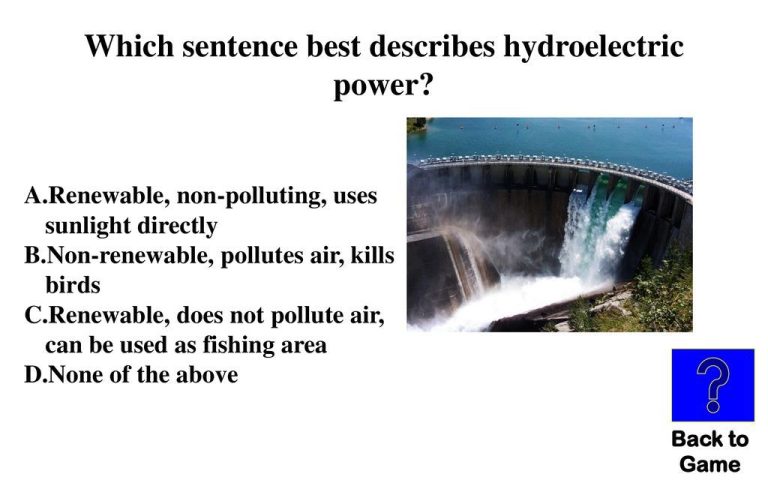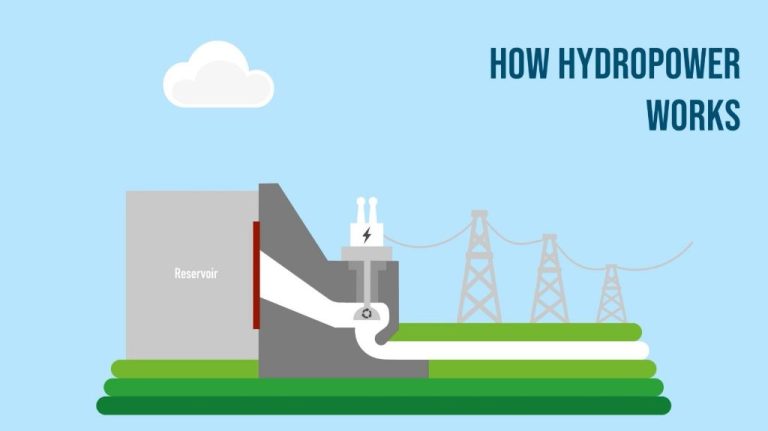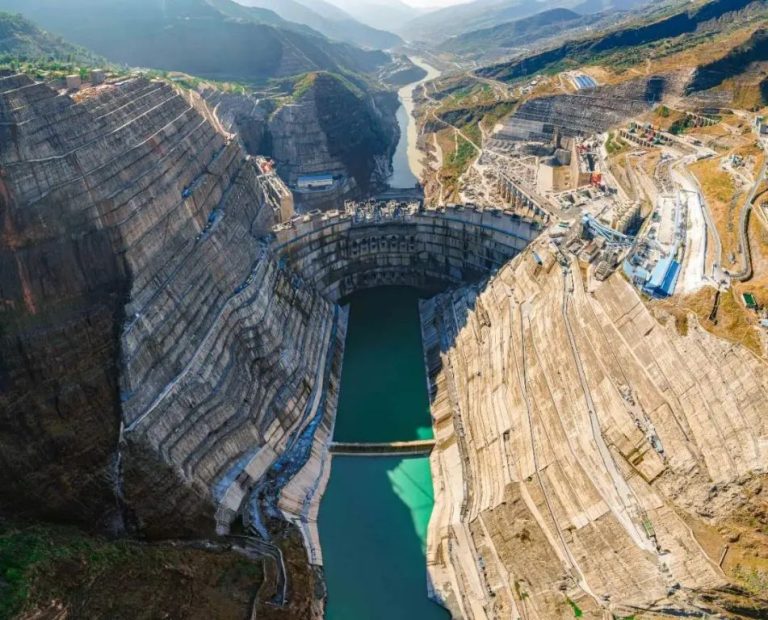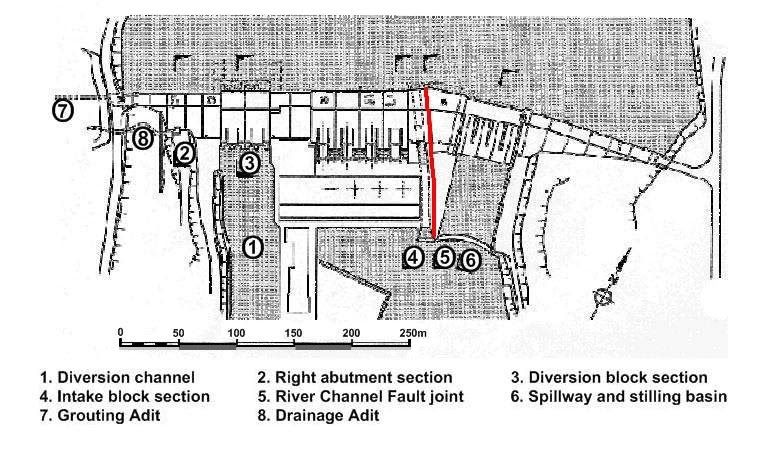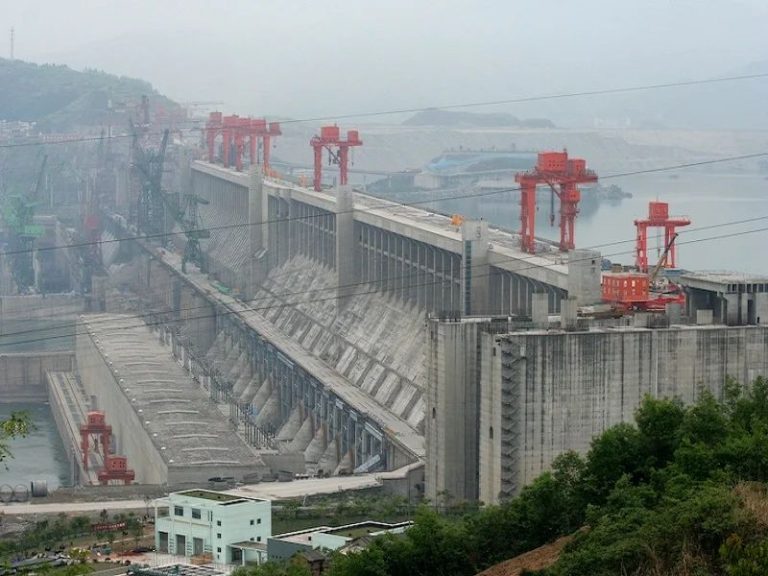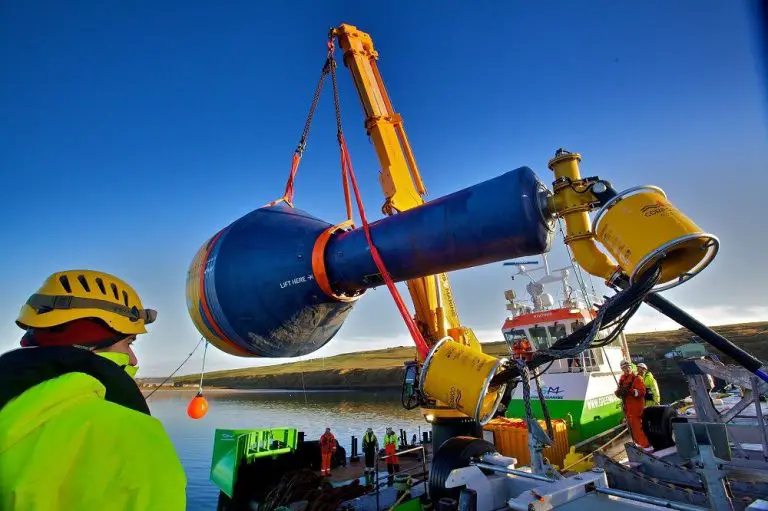How Is Hydropower Turned Into Electricity?
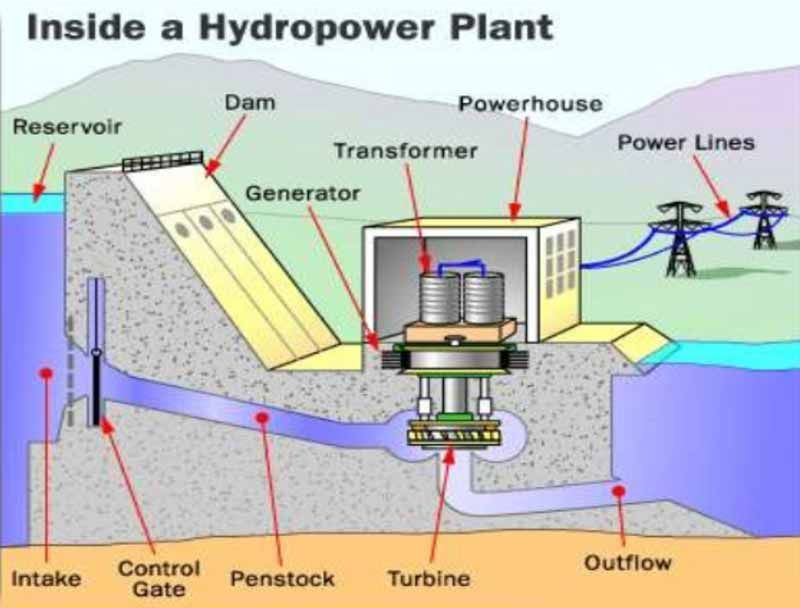
Hydropower is a renewable source of energy that utilizes the natural flow of water to generate electricity. The term “hydropower” refers to the process of using the energy from moving water to produce electrical power.
According to the Merriam-Webster dictionary, hydropower is defined as “hydroelectric power” (https://www.merriam-webster.com/dictionary/hydropower). Hydroelectric power is the conversion of the energy in flowing water into electricity by means of a turbine connected to a generator.
In essence, hydropower harnesses the kinetic energy of flowing or falling water to generate electricity. It is considered a renewable energy source because the water cycle is continuously replenished by precipitation. Hydropower uses this endless cycle to produce a reliable and sustainable supply of electricity.
Hydropower Process Overview
Hydropower plants use a basic process to convert the energy in flowing water into electricity. Here are the main stages:
Dams
Hydropower plants are often built near dams. The dam stores and controls water, creating a reservoir and allowing water to flow through the turbines to generate electricity. Dams help provide a consistent flow of water to the turbines. They also allow water to be stored and released when electricity demand is high. [1]
Turbines
The water in the reservoir flows through large pipes called penstocks and pushes against turbine blades attached to a shaft. The moving water causes the turbine shaft to spin, similar to a ship’s propeller. There are several types of turbines used at hydropower plants, such as Kaplan, Francis and Pelton turbines. [2]
Generators
The spinning turbine turns an electric generator to produce electricity. The generator works through electromagnetic induction – when the turbine spins, it causes magnets inside the generator to spin near wire coils. This motion of the magnets near the coils induces a flow of electrons in the wire to produce electricity. The electricity is then fed into transmission lines to move the power to homes and businesses.
Dams
Dams are a critical component of hydropower facilities. They serve the vital purpose of storing water in reservoirs to allow controlled flow through the turbines for electricity generation. Dams restrict rivers to create large reservoirs, and the water is released through intake gates in a controlled manner
The height of the dam determines the amount of potential energy available. The greater the height of the water behind the dam, the more pressure the water will apply on the turbines. This allows more electricity to be generated. Dams vary greatly in size from small run-of-river dams just a few meters tall to massive structures like the Hoover Dam at 221 meters tall.
According to energyeducation.ca, the three main purposes of hydroelectric dams are to “store water for later use, control flooding, and allow water to be diverted into outlets and penstocks” (source). Reservoirs created by dams provide a reliable and consistent source of water flow, which allows hydropower facilities to generate a steady supply of electricity.
Turbines
Hydropower turbines are turned by the kinetic energy of moving water to convert it into mechanical energy. The flow of water pushes against the turbine blades, spinning the rotor shaft that connects to the generator and creating rotational energy. There are two main types of hydropower turbines:
- Impulse turbines, which use the velocity of water to move the runner and are suitable for high head waterfalls.
- Reaction turbines, which use the pressure or weight of water to move the runner and are suitable for low head dams.
The most common turbine types used in hydropower plants are Pelton wheels (impulse turbine) and Francis and Kaplan turbines (reaction turbines). The optimal turbine design depends on the head and flow characteristics of the site. Proper turbine selection helps maximize the power generated from the available water source.
As the turbine spins, it turns an electromagnet rotor within wire coils to generate electrical current. This principle of electromagnetic induction converts the mechanical rotation into usable electricity that can be fed into transmission lines for distribution.
[CITE source 1 – “How Hydropower Works” by the U.S. Bureau of Reclamation https://www.usbr.gov/power/edu/pamphlet.pdf]
Generators
The turbine spins a shaft inside the generator to convert the mechanical energy of the moving water into electrical energy. Generators operate based on the principle of electromagnetic induction. When the shaft spins inside the generator, it rotates a rotor inside a set of coils known as a stator. The rotor contains magnets that create a magnetic field which passes through the coils in the stator. This moving magnetic field induces an electric current in the coils of the stator through electromagnetic induction. The alternating current that is generated has a frequency that matches the rotational speed of the turbine. Modern hydropower generators typically generate three-phase AC power.
The power output of the generator depends on the speed of the turbine and the strength of the magnetic field. Faster spinning turbines and stronger magnetic fields induce more electric current in the generator. By varying the force of water on the turbine blades, the generator output can be adjusted to meet changing power demands. The voltage of the electricity generated is increased by step-up transformers before it is transmitted to substations and distribution lines (https://www.energy.gov/eere/water/how-hydropower-works).
Transformers
After the electricity is produced by the generators, it goes through transformers located inside the powerhouse to step up the voltage for efficient transmission over long distances. As explained by Corefficient, “Transformers are key in stepping-up, to reach vast distances, and stepping-down, for consumers, to the voltages of electricity for safe utilization.” (Source) The lower voltage electricity produced by the generators is stepped up by the transformers to a much higher voltage, which allows it to travel hundreds of miles over transmission lines with minimal power loss. According to Lehigh University, “The electricity goes to the transformer in the powerhouse. The transformer steps up the voltage of the electricity so it may travel through the power lines and reach homes and industries.” (Source) Therefore, the transformers play a key role in increasing the transmission voltage so the electricity generated at hydropower facilities can efficiently reach end users located far away.
Transmission
Once electricity is generated at the hydropower plant, it needs to be transported long distances to homes and businesses. Transmission lines carry electricity from the hydropower plant to substations where voltage is stepped down for distribution. These high voltage transmission lines can transport electricity hundreds of miles with minimal power loss.
New York recently began construction on the Champlain Hudson Power Express, a 339-mile buried transmission line that will bring 1,250 megawatts of clean hydropower from Canada to New York City. This $6 billion project, expected to be completed by 2025, will help New York meet its clean energy goals by providing a significant new source of renewable energy for the state’s largest population center (CrainsNewYork.com, 2022).
Long-distance transmission enables hydropower generated in remote locations with ideal topography and water flow to be transported to load centers where the electricity is needed. High voltage direct current (HVDC) lines are often used for hydropower transmission due to their efficiency over long distances.
Distribution
After electricity is transformed to lower voltages, it enters the distribution system where it is delivered to end users. The distribution system consists of poles, wires, and transformers that bring electricity to homes, businesses, and other facilities.
Distribution lines carry electricity at voltages below 50,000 volts and are the final stage in delivering electricity to customers. Distribution systems can be configured in a radial pattern with feeders coming from a substation, or as an interconnected network allowing multiple pathways for power to flow.
The distribution network has to reach far and wide to deliver electricity to all customers. Rural areas may have long distribution lines spanning many miles. Urban areas require extensive networks with many interconnections and redundancies to ensure reliable supply.
Monitoring and control equipment on the distribution network helps utilities manage voltage levels and respond to outages. Utilities are increasingly installing smart grid technology on their distribution grids to enable two-way communication, automation, and data collection.
Efficient distribution of electricity is crucial for making full use of hydroelectric power generation. Significant investments in distribution infrastructure may be needed in areas where hydropower capacity is added to enable delivery of the new electricity supply. Modernizing and expanding distribution is key for ensuring hydro’s benefits reach all customers.
According to the Tenth Plan, Nepal aims to strengthen its hydropower distribution grid to support growth in hydro capacity and electricity access.
Environmental Impacts
While hydropower is a clean and renewable energy source, it can have negative effects on the local environment (Environmental Impacts of Hydropower, 2023). The construction of dams and reservoirs associated with hydropower disrupts the natural flow of rivers and impacts downstream habitats and ecosystems.
Building dams floods large areas upstream, destroying natural vegetation and wildlife habitat. This habitat disruption impacts biodiversity and the ability of species to migrate and breed (What Are the Environmental Impacts of Hydropower?, 2023). Dammed reservoirs also change the oxygen levels and temperature of the water, further impacting aquatic life.
Hydropower operations also lead to greenhouse gas emissions, mainly methane, from the decomposition of flooded biomass in the reservoirs (Environmental Impacts of Hydropower, 2023). However, these emissions are far lower compared to fossil fuel power plants.
Overall, steps can be taken to mitigate the environmental effects of hydropower such as implementing fish ladders, preserving water flows, and managing reservoir levels. But the disruption of natural habitats remains an issue that must be weighed against the benefits.
Future of Hydropower
Hydropower has huge potential for growth and innovation in the coming years. According to the U.S. Department of Energy, hydropower could grow from 101 gigawatts of capacity today to nearly 150 gigawatts by 2050. That’s an increase of over 45%1
Major innovations and advancements are supporting this growth. For example, new turbine designs like fish-friendly Archimedes screw turbines allow generating electricity while protecting wildlife. Advanced pumped storage can act like a giant battery to store energy and balance the grid. Machine learning and predictive maintenance techniques will also boost efficiency and reliability2
Floating solar panels that share hydropower reservoirs represent another key innovation. Combining solar and hydropower this way provides renewable synergy. Ultimately, continued technology improvements and sustainable development will help hydropower expand and support the renewable energy transition.

